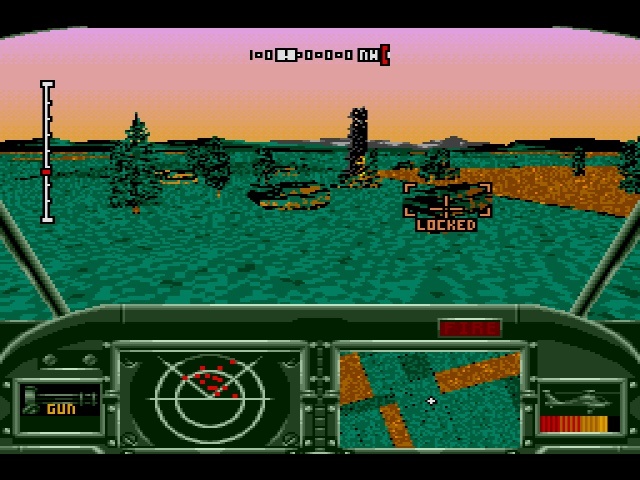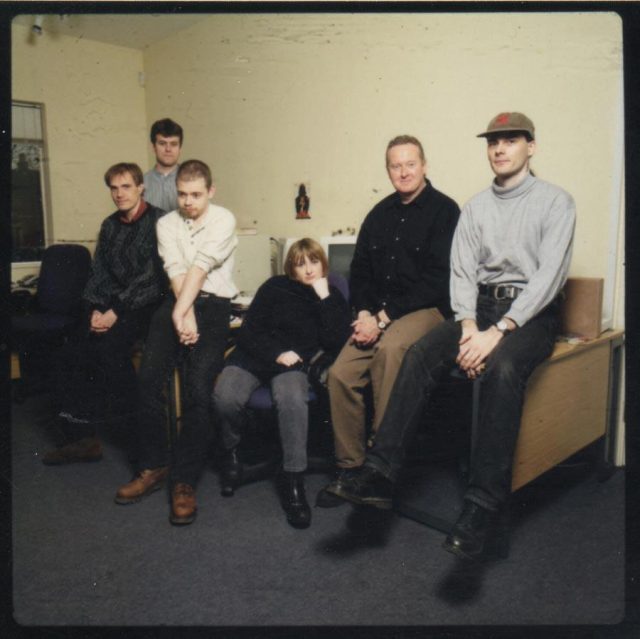
The house that built Tomb Raider sat on top of the world in 1998. Fresh from two gang-busting chart toppers that eventually amassed roughly 15 million in sales between them, Core Design and its parent company Eidos prepared to release a third adventure for starlet Lara Croft—a video game character so immensely and immediately popular that she was a household name within a year of her introduction. Croft quickly became an icon not just of the burgeoning, maturing games industry, but also of popular culture. She was on the covers of magazines such as Newsweek, Rolling Stone, and Time. And she later found her way onto the silver screen, portrayed by Angelina Jolie in two blockbuster films. Ms. Croft seemed to be everywhere.
Tomb Raider developer Core Design appeared untouchable with Lara in tow, and it was thanks to the franchise's immense success that publisher Eidos had just been named the fastest-growing company in the world at the 1998 World Economic Forum. But the studio's creative origins clashed with the publicly traded Eidos' year-in, year-out reliance on the Tomb Raider brand as a money-making machine. By the end of 2003—the year that the disastrous, hellishly developed sixth Tomb Raider in seven years was forced out unfinished—they were laughing stocks of the entertainment world.
Embarrassed at losing face, Eidos put Core Design co-founder and CEO Jeremy Heath-Smith on gardening leave (suspension with pay) for a year and yanked the Tomb Raider franchise from its home. The British heroine was packed off to Legacy of Kain developer Crystal Dynamics in the US, where she has arguably flourished without the pressures of annualized sequels.
Core soon split in two, with Heath-Smith and his brother Adrian—who was second in command—taking around 30 employees with them to new venture Circle Studio. Eidos sent in its own people as interim management, and many wondered if the studio—its reputation in tatters and its identity lost—would live through another year.
But let's backpedal. How, in the space of just a few years, could a games development studio go from untouchable at the top of the world to bleeding out in the gutter? Where did it all go wrong for Core Design?
Creative culture
Modern perceptions aside, Core Design was never "the Tomb Raider studio." Founded in 1988 from the ashes of a Gremlin Graphics (later renamed Gremlin Interactive) Derby studio, it was originally a small and loosely organized outfit of artists and programmers who made games for the leading home computer platforms of the time—Commodore 64, ZX Spectrum, Amiga, Atari ST, and DOS.
One early highlight was Rick Dangerous, an Indiana Jones-styled platformer that could be seen as a forebear to both Tomb Raider and to Spelunky. Others included Chuck Rock, a side-scrolling platformer with a touch of British slapstick; AH-3 Thunderstrike (Thunderhawk outside North America), a highly rated combat helicopter sim; and Banshee, an alternate-history-themed arcade-style shoot-'em-up.

The studio was granted a license to develop Sega Genesis games before any other British developer, and in 1990 it set up its own publishing and distribution business. Core soon established itself as one of the stronger producers of Amiga and Sega CD games, which was no doubt a factor in its 1994 acquisition by CentreGold. Eidos then swooped in with a £17.6 million takeover of CentreGold in April 1996, six months before the release of the original Tomb Raider.
Core's organizational structure through all this time was fairly lax, and neither ownership change had any effect on the company's autonomy. "We had a lot of freedom," notes Roberto Cirillo, an artist who worked at Core from 1992 to the 2003 split (and one of the few staff who never worked on a Tomb Raider game). "To me, it always really felt more like a place where talented people would come together to show off their ideas and skills in video-game development than an actual ‘work office.'"
Gavin Rummery, programmer at Core from 1995 and studio manager after the Smith brothers left, has similar recollections. The Smith brothers "just kind of left us to it," he says. "They'd had enough success [that] Jeremy knew if he got these crazy guys and wound us up and let us go [it'd all work out]."

The atmosphere within the studio seemed more akin to a collective of bedroom coders than a professional company with offices, and the building that they worked in only added to the feeling. "I've heard it described as a mansion," says Rummery. "It was a big Victorian house… and [it] had been converted into offices. It was really higgledy-piggledy inside. All the teams were in small little rooms, so we couldn't have fitted more than six people in our [Tomb Raider] room."
They didn't bother with design documents or any real planning, either, notes Nathan McCree, composer and sound designer at Core from 1993 to 1997 (and freelance composer on Tomb Raider III). "Everyone just chucked stuff in the game as fast as they could and somehow we made it all work," he says.
"There was no real hierarchy," says Andy Sandham, level designer and scriptwriter on Tomb Raiders III through V. Even testers could put in their ideas and be listened to; Sandham successfully pitched his idea for Blam! Machinehead during his job interview.
"A good example of the creative allowances they gave us was that I wrote the script where I killed Lara [in Tomb Raider IV: The Last Revelation]," says Sandham. "Effectively we came up with a script because we were getting very tired of doing Tomb Raider by Tomb Raider IV. So we decided to kill Lara.
"I don't know if we ever actually told Jeremy, but Jeremy was perfectly happy with it when he found out… It's just crazy that we were allowed so much freedom with such an iconic figure. They trusted us. They trusted our creativity."
While the atmosphere was often loose and casual, it could also be highly stressful. "I saw several people walking out of that building looking very grey from not having slept for 72 hours and feeling rather ill," McCree says. "There were camp beds in various places around the building where people would sleep. Many people were sleeping under their desks or in their chair.
"Even in a cupboard," he continues, laughing at the memory. "I found somebody asleep in a cupboard once."
Without much direct oversight, teams tended to fall into scheduling disarray. "What we would normally do on a project, is we would spend six months crunching 'til about two or three in the morning every night—and at that age we could still do it—and then we'd spend about four months pissing around [just relaxing and doing research for the next game]," recalls Sandham.
reader comments
108